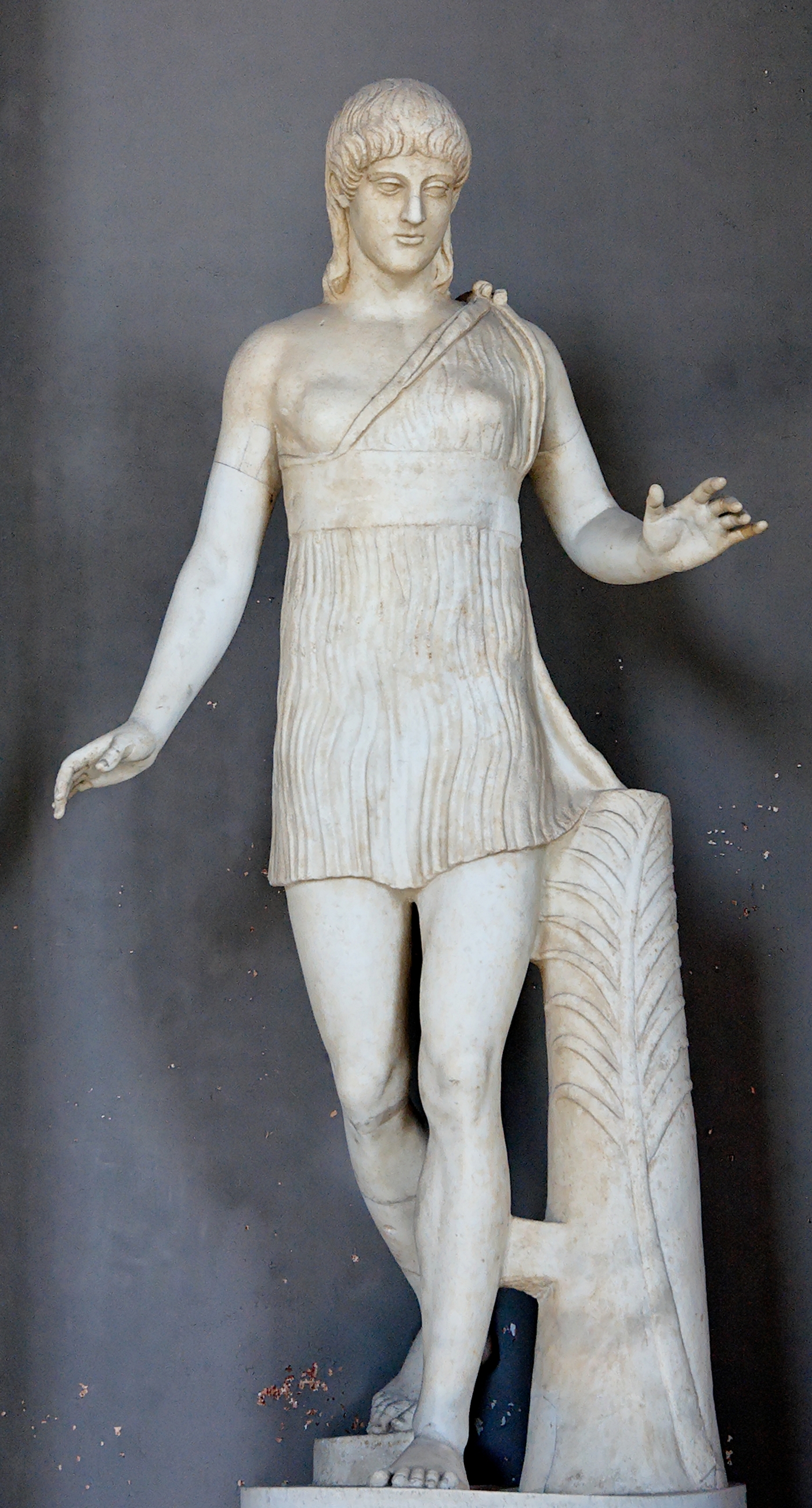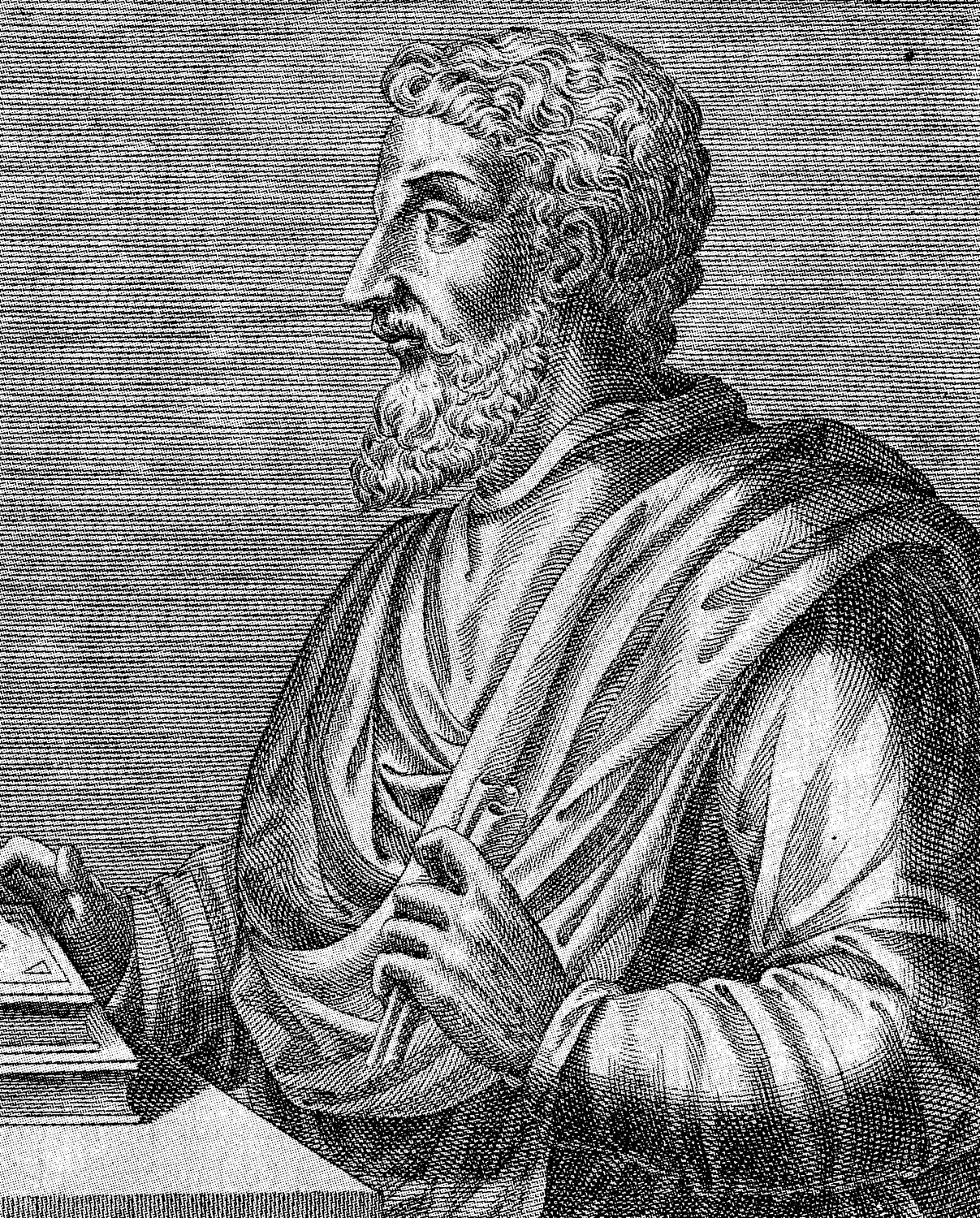|
Pasiteles
Pasiteles ( grc-gre, Πασιτέλης; sometimes called Pasiteles the Younger) was a Neo-Attic school sculptor from Ancient Rome at the time of Julius Caesar. Pasiteles is said by Pliny the Elder, Pliny to have been a native of Magna Graecia, and to have been granted Roman citizenship. He worked during a period where there was a demand for copies of, or variations on, noted works of Sculpture of Ancient Greece, Greek sculpture; the demand was met by the workshops of Pasiteles and his pupils Stephanus and Menelaus and others, several of whose statues are extant. According to Pliny, Pasiteles made an ivory statue of Jupiter for the Temple of Castor and Pollux, temple of Metellus and made statues for the temple of Juno in the Porticus Octavia, portico of Octavia. Pliny states that Pasiteles worked in marble, silver, ivory, and bronze and, according to his contemporary Marcus Terentius Varro, Varro, never made a statue without first making a clay model. Pasiteles was the author of f ... [...More Info...] [...Related Items...] OR: [Wikipedia] [Google] [Baidu] |
Atalanta Vatican Inv2784
Atalanta (; grc-gre, Ἀταλάντη, Atalantē) meaning "equal in weight", is a heroine in Greek mythology. There are two versions of the huntress Atalanta: one from Arcadia (region), Arcadia, whose parents were Iasus and Clymene (mythology), Clymene and who is primarily known from the tales of the Calydonian boar hunt and the Argonauts; and the other from Boeotia, who is the daughter of King Schoeneus and is primarily noted for her skill in the footrace. In both versions, Atalanta was a local figure allied to the goddess Artemis; in such oral traditions, minor characters were often assigned different names, resulting in minor regional variations. Mythology Early life At birth, Atalanta was taken to Mount Parthenion to be Infant exposure, exposed because her father had desired a son. A she-bear—one of the symbols of Artemis—whose cubs had been recently killed by hunters came upon Atalanta and nursed her until those same hunters discovered her and raised her themselves ... [...More Info...] [...Related Items...] OR: [Wikipedia] [Google] [Baidu] |
Marcus Terentius Varro
Marcus Terentius Varro (; 116–27 BC) was a Roman polymath and a prolific author. He is regarded as ancient Rome's greatest scholar, and was described by Petrarch as "the third great light of Rome" (after Vergil and Cicero). He is sometimes called Varro Reatinus to distinguish him from his younger contemporary Varro Atacinus. Biography Varro was born in or near Reate (now Rieti) to a family thought to be of equestrian rank, and always remained close to his roots in the area, owning a large farm in the Reatine plain, reported as near Lago di Ripasottile, until his old age. He supported Pompey, reaching the office of praetor, after having been tribune of the people, ''quaestor'' and ''curule aedile''. It is probable that Varro was discontented with the course on which Pompey entered when the First Triumvirate was formed, and he may thus have lost his chance of rising to the consulate. He actually ridiculed the coalition in a work entitled the ''Three-Headed Monster'' ( in th ... [...More Info...] [...Related Items...] OR: [Wikipedia] [Google] [Baidu] |
Hellenistic Sculptors
In Classical antiquity, the Hellenistic period covers the time in Mediterranean history after Classical Greece, between the death of Alexander the Great in 323 BC and the emergence of the Roman Empire, as signified by the Battle of Actium in 31 BC and the conquest of Ptolemaic Egypt the following year. The Ancient Greek word ''Hellas'' (, ''Hellás'') was gradually recognized as the name for Greece, from which the word ''Hellenistic'' was derived. "Hellenistic" is distinguished from "Hellenic" in that the latter refers to Greece itself, while the former encompasses all ancient territories under Greek influence, in particular the East after the conquests of Alexander the Great. After the Macedonian invasion of the Achaemenid Empire in 330 BC and its disintegration shortly after, the Hellenistic kingdoms were established throughout south-west Asia (Seleucid Empire, Kingdom of Pergamon), north-east Africa ( Ptolemaic Kingdom) and South Asia (Greco-Bactrian Kingdom, Indo-Greek Kin ... [...More Info...] [...Related Items...] OR: [Wikipedia] [Google] [Baidu] |
Colotes (sculptor)
Colotes of Lampsacus ( el, Κολώτης Λαμψακηνός, ''Kolōtēs Lampsakēnos''; c. 320 – after 268 BC) was a pupil of Epicurus. He wrote a work to prove "That it is impossible even to live according to the doctrines of the other philosophers" () and dedicated it toPtolemy II Philadelphus. Although this work is lost, its arguments are preserved in two works written by Plutarch in refutation of it: "That it is impossible even to live pleasantly according to Epicurus", and ''Against Colotes''. According to Plutarch, Colotes attacked Socrates and other great philosophers in this work. Some fragments of two other works of Colotes have been discovered at the Villa of the Papyri at Herculaneum: ''Against Plato's Lysis'', and ''Against Plato's Euthydemus''. According to Plutarch, Colotes, upon hearing Epicurus discourse on the nature of things, fell on his knees before him, and besought Epicurus to give him instruction. Plutarch claims that Colotes was a great favorite with Ep ... [...More Info...] [...Related Items...] OR: [Wikipedia] [Google] [Baidu] |
Phidias
Phidias or Pheidias (; grc, Φειδίας, ''Pheidias''; 480 – 430 BC) was a Greek sculptor, painter, and architect. His Statue of Zeus at Olympia was one of the Seven Wonders of the Ancient World. Phidias also designed the statues of the goddess Athena on the Athenian Acropolis, namely the ''Athena Parthenos'' inside the Parthenon, and the '' Athena Promachos'', a colossal bronze which stood between it and the Propylaea, a monumental gateway that served as the entrance to the Acropolis in Athens. Phidias was the son of Charmides of Athens. The ancients believed that his masters were Hegias and Ageladas. Plutarch discusses Phidias' friendship with the Greek statesman Pericles, recording that enemies of Pericles tried to attack him through Phidias – who was accused of stealing gold intended for the Parthenon's statue of Athena, and of impiously portraying himself and Pericles on the shield of the statue. The historical value of this account, as well as the leg ... [...More Info...] [...Related Items...] OR: [Wikipedia] [Google] [Baidu] |
Pausanias (geographer)
Pausanias ( /pɔːˈseɪniəs/; grc-gre, Παυσανίας; c. 110 – c. 180) was a Greek traveler and geographer of the second century AD. He is famous for his ''Description of Greece'' (, ), a lengthy work that describes ancient Greece from his firsthand observations. ''Description of Greece'' provides crucial information for making links between classical literature and modern archaeology. Biography Not much is known about Pausanias apart from what historians can piece together from his own writing. However, it is mostly certain that he was born c. 110 AD into a Greek family and was probably a native of Lydia in Asia Minor. From c. 150 until his death in 180, Pausanias travelled through the mainland of Greece, writing about various monuments, sacred spaces, and significant geographical sites along the way. In writing ''Description of Greece'', Pausanias sought to put together a lasting written account of "all things Greek", or ''panta ta hellenika''. Living in t ... [...More Info...] [...Related Items...] OR: [Wikipedia] [Google] [Baidu] |
Xenokrates Of Sicyon (1st century AD), physician
{{hndis ...
Xenocrates is a Chalcedon (4th century BC) philosopher. Xenocrates or Xenokrates is also the name of: * Xenokrates of Sicyon (3rd century BC), writer and sculptor *Xenocrates of Aphrodisias Xenocrates ( el, Ξενοκράτης; fl. 1st century) a Greek physician of Aphrodisias in Cilicia, who must have lived about the middle of the 1st century, as he was probably a contemporary of Andromachus the Younger. Galen says that he lived in ... [...More Info...] [...Related Items...] OR: [Wikipedia] [Google] [Baidu] |
Porticus Octavia
The Porticus Octavia (Octavian Portico) was a portico in ancient Rome, built by Gnaeus Octavius (consul 165 BC), Gnaeus Octavius in 168 BC to commemorate a naval victory over Perseus of Macedonia. It stood between the Theatre of Pompey and the Circus Flaminius. Pliny the Elder, Pliny describes it as a double portico with bronze Corinthian order, Corinthian capitals, for which it was also called the Porticus Corinthia. It may have been the earliest use of this architectural order in Rome, and is possibly to be identified with remains in the Via S. Nicola ai Cesarini, represented in the Forma Urbis Romae, Severan Marble Plan (frg. 140). Velleius Paterculus called it ''multo amoenissima'', or "by far the loveliest" of the porticoes, but has left no traces. In 33 BC, Octavian (the future Augustus) recovered the Roman military standards, military standards lost by Aulus Gabinius, Gabinius to the Illyrians, and displayed them at the Porticus Octavia, which he rebuilt to commemorate the c ... [...More Info...] [...Related Items...] OR: [Wikipedia] [Google] [Baidu] |
Neo-Attic
Neo-Attic or Atticizing is a sculptural style, beginning in Hellenistic sculpture and vase-painting of the 2nd century BC and climaxing in Roman art of the 2nd century AD, copying, adapting or closely following the style shown in reliefs and statues of the Classical (5th–4th centuries BC) and Archaic (6th century BC) periods. It was first produced by a number of Neo-Attic workshops at Athens, which began to specialize in it, producing works for purchase by Roman connoisseurs, and was taken up in Rome, probably by Greek artisans. The Neo-Attic mode, a reaction against the baroque extravagances of Hellenistic art, was an early manifestation of Neoclassicism, which demonstrates how self-conscious the later Hellenistic art world had become. Neo-Attic style emphasises grace and charm, serenity and animation,Gisela Richter praised the serenity and animation of a neo-Attic marble vase, ca. first century BC-first century AD, purchased for the Metropolitan Museum of Art (Richter, "A N ... [...More Info...] [...Related Items...] OR: [Wikipedia] [Google] [Baidu] |
Temple Of Castor And Pollux
The Temple of Castor and Pollux ( it, Tempio dei Dioscuri) is an ancient temple in the Roman Forum, Rome, central Italy. It was originally built in gratitude for victory at the Battle of Lake Regillus (495 BC). Castor and Pollux (Greek Polydeuces) were the Dioscuri, the "twins" of Gemini, the twin sons of Zeus (Jupiter) and Leda. Their cult came to Rome from Greece via Magna Graecia and the Greek culture of Southern Italy. The Roman temple is one of a number of known Dioscuri temples remaining from antiquity. Founding The last king of Rome, Lucius Tarquinius Superbus, and his allies, the Latins, waged war on the infant Roman Republic. Before the battle, the Roman dictator Aulus Postumius Albus Regillensis vowed to build a temple to the Dioscuri (Castor and Pollux) if the Republic were victorious. According to legend, Castor and Pollux appeared on the battlefield as two able horsemen in aid of the Republic; and after the battle had been won they again appeared on the Forum in Ro ... [...More Info...] [...Related Items...] OR: [Wikipedia] [Google] [Baidu] |
Sculpture Of Ancient Greece
The sculpture of ancient Greece is the main surviving type of fine ancient Greek art as, with the exception of painted ancient Greek pottery, almost no ancient Greek painting survives. Modern scholarship identifies three major stages in monumental sculpture in bronze and stone: the Archaic (from about 650 to 480 BC), Classical (480–323) and Hellenistic. At all periods there were great numbers of Greek terracotta figurines and small sculptures in metal and other materials. The Greeks decided very early on that the human form was the most important subject for artistic endeavour. Seeing their gods as having human form, there was little distinction between the sacred and the secular in art—the human body was both secular and sacred. A male nude of Apollo or Heracles had only slight differences in treatment to one of that year's Olympic boxing champion. The statue, originally single but by the Hellenistic period often in groups was the dominant form, though reliefs, often so "h ... [...More Info...] [...Related Items...] OR: [Wikipedia] [Google] [Baidu] |






